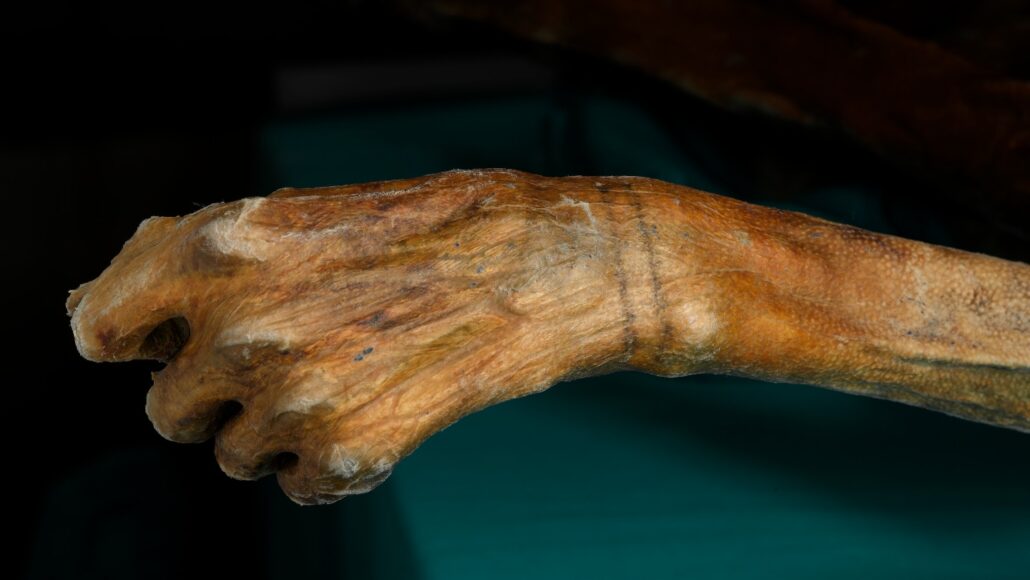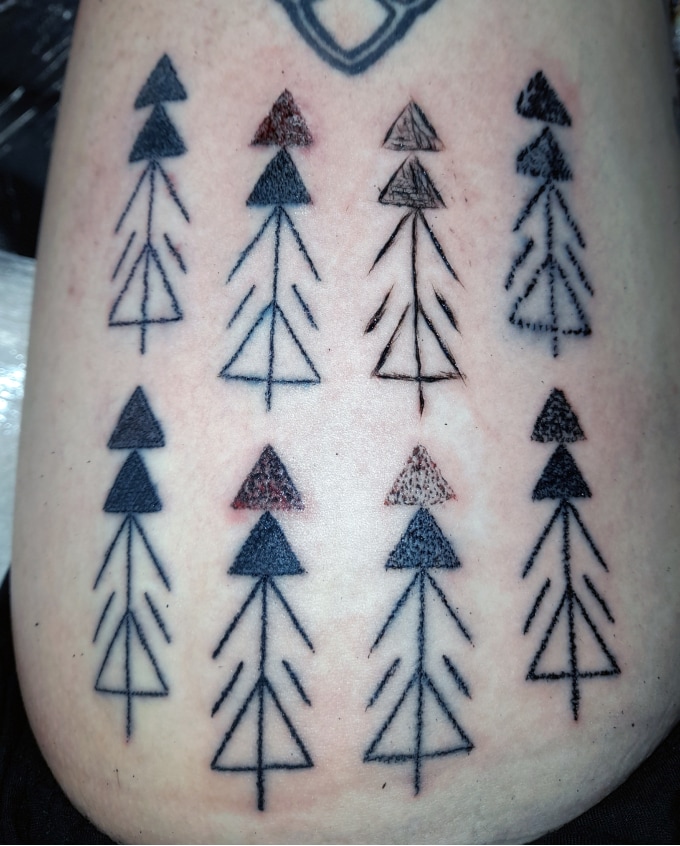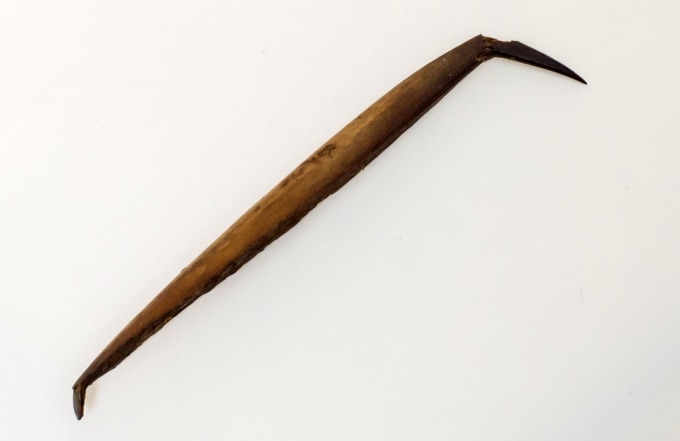A tattoo experiment hints at how Ötzi the Iceman got his ink
The mummified man’s tattoos were probably poked, not sliced, into his skin

Here, you can see tattooed lines on Ötzi the Iceman’s left wrist. These tattoos and others on his body could have been created by poking holes in the skin with a pigment-coated tool.
South Tyrol Museum of Archaeology, M. Samadelli/Eurac, G. Staschitz
Share this:
- Share via email (Opens in new window) Email
- Click to share on Facebook (Opens in new window) Facebook
- Click to share on X (Opens in new window) X
- Click to share on Pinterest (Opens in new window) Pinterest
- Click to share on Reddit (Opens in new window) Reddit
- Share to Google Classroom (Opens in new window) Google Classroom
- Click to print (Opens in new window) Print
By Bruce Bower
An off-beat experiment has poked holes in a common assumption about Ötzi the Iceman’s tattoos.
Ötzi is a roughly 5,200-year-old mummy. His body was found in a mountain glacier along the border of Austria and Italy in 1991. That body is decorated with the world’s oldest known tattoos. There are 61 in total, including black lines and crosses on Ötzi’s left wrist, lower legs, lower back and chest.
Scientists had thought that Ötzi got his tattoos by rubbing charcoal ash into slices in his skin. Those cuts would have been made with a sharp stone tool. But until now, that idea had never been tested.
“Our study shows that the past 30 years of [thinking] as to how the Iceman was tattooed is incorrect,” says Aaron Deter-Wolf. He’s an archaeologist at the Tennessee Division of Archaeology. That’s in Nashville.
Deter-Wolf and his colleagues did tattooing experiments. They also reviewed traditional tattooing practices around the world. Their new findings suggest that the common story about how Ötzi got his tattoos is wrong.
Instead, a hand-held, single-pointed tool with pigment on its tip likely punched many tiny holes in Ötzi’s skin. Such closely spaced pricks of ink could have built up the lines of the Iceman’s tattoos.
The researchers shared the findings March 13 in the European Journal of Archaeology.
This “hand-poke” tattooing technique has been used by non-industrial cultures around the world. And that includes Ötzi’s home region of central Europe.
Do you have a science question? We can help!
Submit your question here, and we might answer it an upcoming issue of Science News Explores
Tattooing for science
A 2022 study set the stage for the new findings. Deter-Wolf teamed up with two professional tattoo artists for that study. Both artists specialize in traditional, nonelectric methods of tattooing. One was Danny Riday, who works at The Temple Tattoo in Tamahere, New Zealand. With help from his colleague, Riday tattooed his leg with eight identical line designs. He did this using eight tools and four techniques.
The tools were made from animal bone, obsidian, copper, a boar tusk and a steel needle.
The first technique was hand poking. The second involved tapping the handle of a bone point or a bone comb with a wooden tool. This caused the pigment-coated tips of the point or comb to puncture the skin. The third technique was slicing the skin with an obsidian blade and then rubbing pigment into the cut. The fourth method involved using a needle to pull a pigment-infused thread through the skin’s outer layer.

In the new study, the researchers compared microscope images of Riday’s tattoos to images of Ötzi’s. Riday’s tattoos were viewed after they had healed for six months.
Tattoos drawn with different tools and techniques showed distinct features, Deter-Wolf says. Those made with the hand poking technique, using a bone point or a copper awl, looked most like Ötzi’s.

On both Riday and the Iceman, these tattoos featured lines 1 to 3 millimeters (0.04 to 0.11 inch) wide. They were made up of many small dots and had round ends. And their pigment seeped irregularly along the edges.
The new study cannot prove for sure how Ötzi got his tattoos, says Marco Samadelli. But it does provide “extensive and plausible” evidence for the hand poking technique. Samadelli works at the Institute for Mummy Studies at Eurac Research in Bolzano, Italy. He directed conservation of Ötzi’s remains from 1998 to 2021.
A bone awl was found among Ötzi’s belongings when the Iceman was unearthed. That tool may have a point sharp enough for use in tattooing, Deter-Wolf says. So might an antler tip from Ötzi’s quiver. But those artifacts have not yet been examined for tattoo-related damage or pigment remains.







